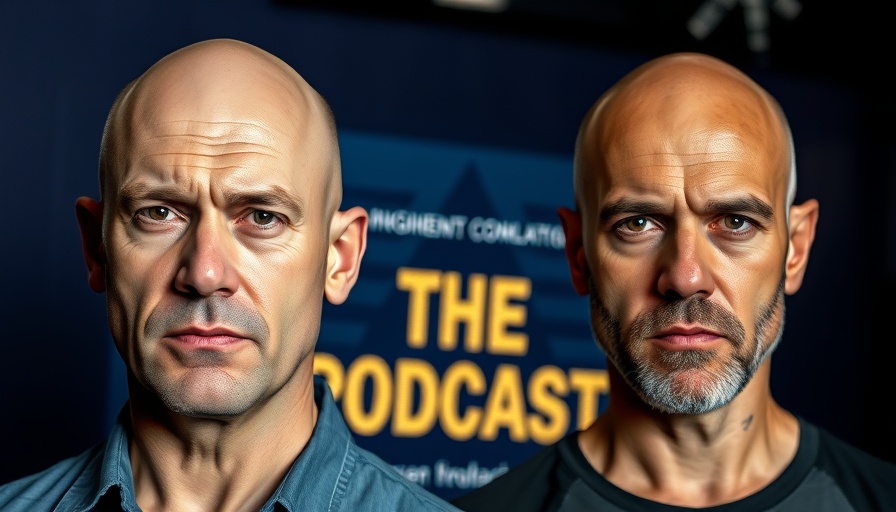
The Unyielding Spirit of a Special Forces Operator
In the gripping video 'Inside the Mind of a Special Forces Operator - Curt Mitchell', special forces veteran Curt Mitchell lays bare the complexities of transitioning from military life to civilian life, the pressures of performance, and the pursuit of mental wellness amidst it all. His stories and insights offer an unprecedented look into the mind of someone who risked life and limb in service to their country and now embarks on a new, equally complex journey.
In 'Inside the Mind of a Special Forces Operator - Curt Mitchell,' the discussion dives into the complex transition from military life to civilian life, exploring key insights that sparked deeper analysis on our end.
Adventurer at Heart: The Journey Begins
Mitchell's desire for a thrilling life led him not only through rigorous military training but also gave him experiences few can fathom. As he journeyed into special forces, he recalls initial excitement, camaraderie, and a sense of duty.
Yet, that initial adventure collided with the harsh realities of military life. The intense pressure and expectations can lead to burnout, especially when one finds themselves functioning on autopilot, as Mitchell experienced. Understanding when one is no longer at their peak state is crucial; it's the peace that comes with recognition and facing it, head-on.
The Mental Game: Flow State and Resilience
Mitchell emphasizes the importance of 'flow state,' a mental condition characterized by complete absorption in an activity, where time seems to slow, allowing operators to perform under intense pressure. For him, the essence of training lies in pushing oneself to the edge, refining skills so extensively that even life-threatening situations feel manageable.
This nuanced understanding does not vanish once one leaves military life; rather, it requires intentional application. Techniques such as breathwork and mental exercises became essential to operationalize the training he had mastered. He advises novices that true resilience stems from a well-structured approach to managing stress, which arises from one’s deeper understanding of self.
Critical Thinking in a Confusing World
Mitchell’s insights extend beyond military operations into daily life. His perspective on critical thinking—especially in today's information-saturated environment—encourages us to question everything. Consuming information from secondary sources, such as mainstream media, often leads to misinformed viewpoints. Encouraging individuals to seek primary sources and analyze them critically is one of his key lessons.
Mitchell highlights that discernment in consuming information is crucial for anyone who seeks to understand the world more clearly, urging people to examine the motives behind the content they're engaging with. This level of inquiry, he believes, is vital now more than ever.
Shift from Military to Civilian Life: Finding a New Path
Transitioning from a high-stakes environment like special forces into civilian life is no small feat. Mitchell shares his personal struggles with the separation from action and how reintegrating himself into society required a new set of goals. Focusing on operationalizing training techniques aids his clients as they navigate their challenges; one doesn't need to return to war zones to find purpose and fulfillment.
The most impactful takeaway resonates with those in any profession: identify the pillars within your life that warrant focus, be it mental clarity, physical health, or insightful decision-making. When these foundations are strong, one can weather the storms of uncertainty that life may bring.
Final Thoughts: Moving Forward with Purpose
As Mitchell articulates, life after special forces does not mean living in the shadow of past glory days. Instead, embracing the journey into new territory, facing fears, and fostering connections can lead to personal growth and rejuvenation. The military's training equips one for attacking challenges with relentless resolve, but the real challenge lies in sustaining that spirit in every aspect of life—a testament to resilience and the unyielding human spirit.
Viewing 'Inside the Mind of a Special Forces Operator,' serves not only as an eye-opener on the operations of elite military service but also provides pathways toward understanding one’s capabilities amidst transition. The wisdom shared invites us all to reflect on our own challenges and approach them with the fervor of a special forces operator.
 Add Row
Add Row  Add
Add 




Write A Comment